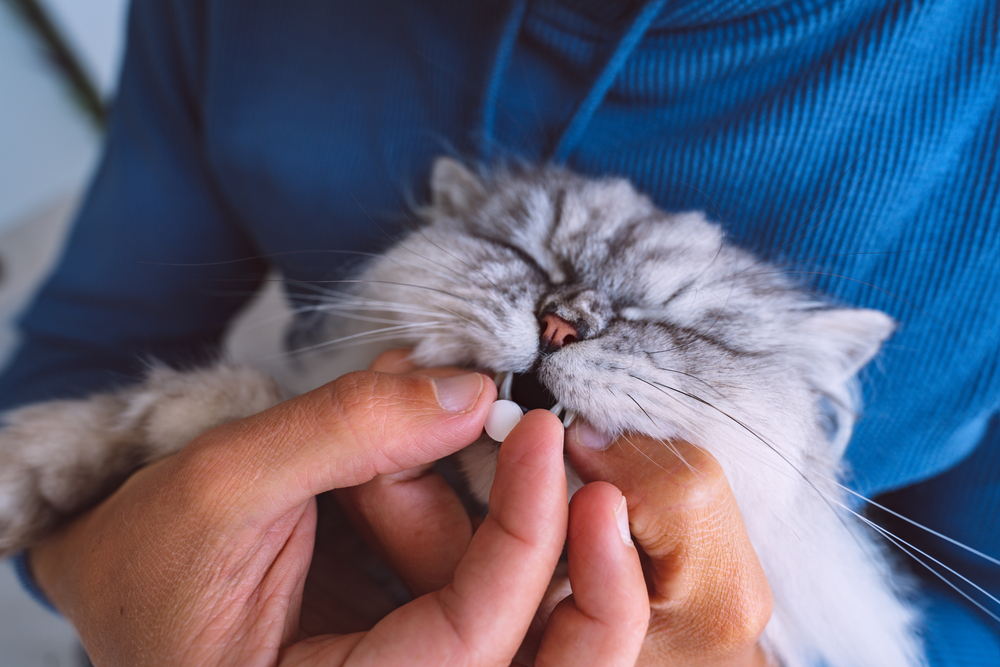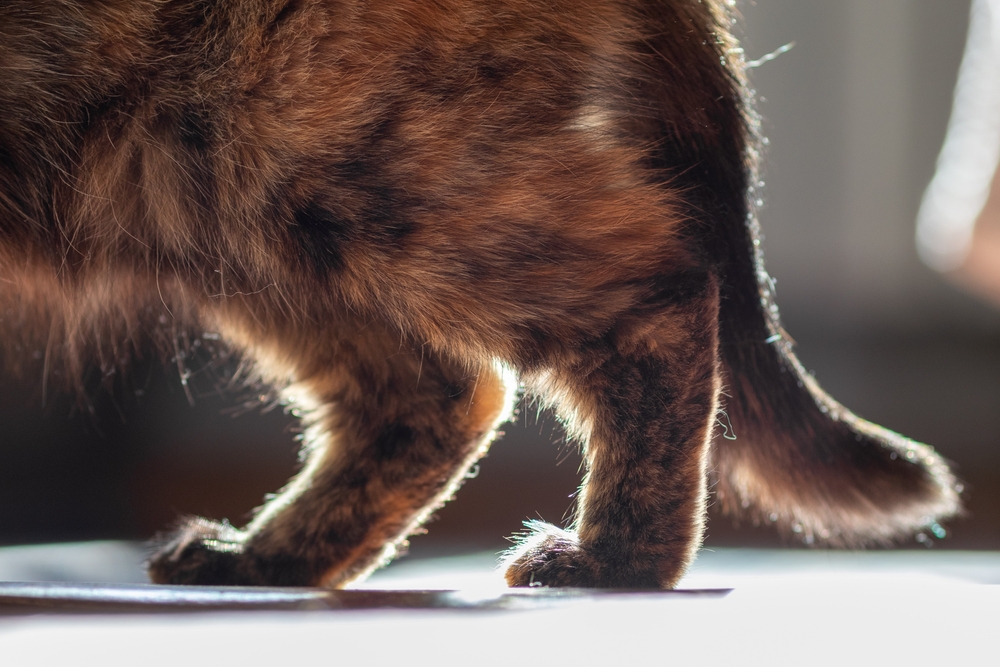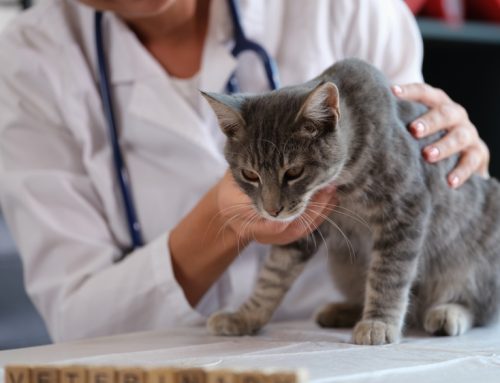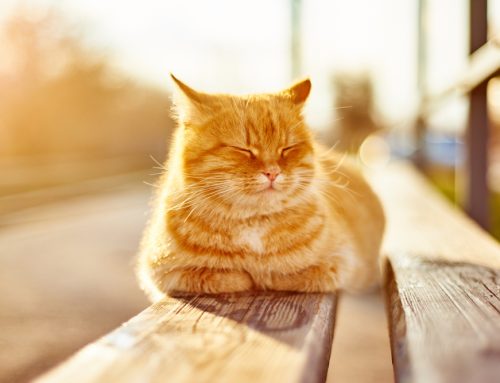Although your aging cat may not seem to be slowing down, they likely have arthritis in at least one joint, and probably in the same joints on both sides of their body. Because cats generally develop arthritis in both hips, knees, or elbows, detecting changes in their gait or posture that indicate arthritis can be difficult. However, about 60% of cats have arthritis by age 6, and up to 90% of cats age 12 or older are affected by this joint disease.
With such a high likelihood that your cat will develop arthritis, take time now to learn to effectively manage this condition. That way, you will be prepared when you notice your feline friend can’t jump as well, cannot clamber over their litter box’s tall sides, or meows in discomfort when they bend to reach their food dish. Here are six ways to keep your arthritic cat comfortable and mobile as they age.
#1: Keep your cat at a healthy weight
Cats are meant to be lean, mean, hunting machines, so every additional pound over their ideal weight can create incredible stress on their joints. Helping your cat maintain a healthy weight from the moment you bring them home is one of the best things you can do for their health and wellbeing.
Assist your cat to achieve their ideal body condition by:
- Measuring their food — Do you use your cat’s entire food bowl as a scoop? When you dole out your cat’s meal, use an actual measuring cup instead of eyeballing the amount. A typical house cat generally does well on ¼ to ⅓ of a cup of food twice a day.
- Choosing healthy treats — If your cat can eat half a bag of Temptations treats a day, swap out these high-calorie snacks for healthier options, like small bites of lean meat.
- Feeding from food puzzles — Do not dump your cat’s kibble in a bowl and watch them devour it in seconds. Fill up a food puzzle with their meal, which will exercise their brain and body as they try to reach their food.
#2: Encourage your cat to be active every day
Many house cats become bored and overweight, leading to a vicious cycle of inactivity and weight gain. Help your cat get up and get moving every day with interactive toys. Flick a feather wand at your cat to encourage them to pounce, or trail a mouse on a string for stalking practice. Aim for at least three 5- to 10-minute exercise sessions per day.
#3: Pamper your cat to reduce discomfort
Stiff, aching joints require extra TLC to keep your feline friend comfortable. Pamper your arthritic cat with these tips:
- Use heating pads — Self-warming heating pads that do not require a power source are excellent for safely soothing joint pain. Your cat will love cuddling up on their heating pad and feeling the warmth melt away their stiffness and discomfort.
- Purchase supportive beds — While soft, plush beds are great for burrowing, they are difficult for arthritic cats to leave. Opt for a firm, supportive bed, so your cat doesn’t have to struggle to get out of bed.
- Groom your cat regularly — Arthritic cats are no longer as flexible, and may struggle to groom themselves thoroughly. Help your cat by regularly brushing their hind end, their belly, and under their legs to prevent mats.
#4: Modify your home to make navigation easier for your cat
Many homes have slick flooring that pets find difficult to navigate. Lay down carpet runners or yoga mats to provide traction for your pet, and ensure rug corners stay flat against the floor to prevent tripping.
To help your cat reach areas where they can no longer jump or climb, place ramps and steps in front of furniture or up to lookout towers. This will allow your cat to continue their natural feline behaviors, despite their decreased mobility.
#5: Place resources in easy reach
In addition to making your home easier to navigate, ensure you place your cat’s necessities where they can be reached. If your home has multiple floors, place a litter box, food and water bowls, and a bed on every level, which will help prevent inappropriate elimination and ensure your feline friend has easy access to food, water, and resting areas.
#6: Speak to your veterinarian about arthritis management options

Your Chiefland Animal Hospital veterinarian is your best source for managing your cat’s arthritis pain. Our team will develop an appropriate treatment plan that will keep your cat comfortable and mobile, and minimize potential side effects.
Therapies for arthritic cats include:
- Nonsteroidal anti-inflammatory drugs (NSAIDs) — While safe NSAID options are not available by the ton for cats, several highly effective drugs that cats can tolerate well long-term can reduce their pain and inflammation.
- Pain medication — Drugs that manage neuropathic pain, opioids, and other medications can be used in conjunction with NSAIDs for more effective pain relief.
- Monoclonal antibodies — A Solensia injection can be administered monthly to arthritic cats. This monoclonal antibody targets specific molecules associated with arthritis and reduces pain while improving mobility.
- Prescription diets — Prescription diets are packed with powerful ingredients that support joint health, while also ensuring your cat maintains a healthy weight.
If your feline friend is struggling to jump onto counters and furniture, they may have arthritis. Give our Chiefland Animal Hospital team a call to schedule an appointment for an accurate diagnosis and pain relief for your cat.








Leave A Comment